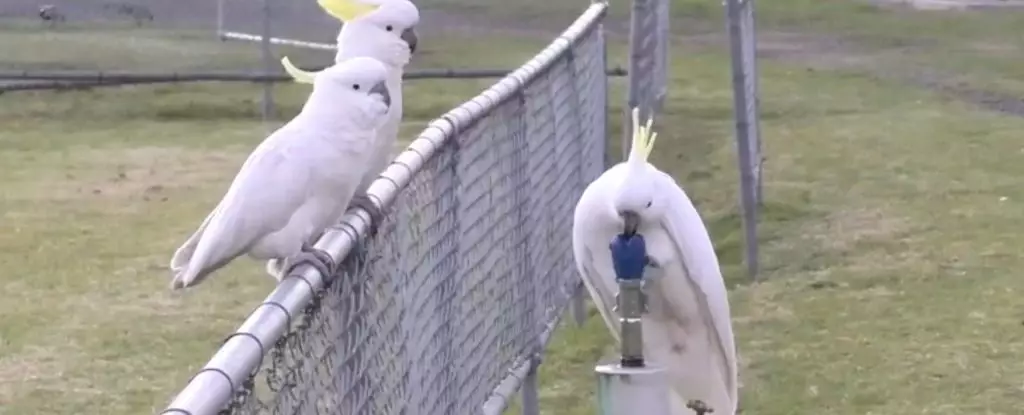In the bustling suburbs of Western Sydney, a delightful spectacle has emerged that showcases just how resourceful sulfur-crested cockatoos (Cacatua galerita) can be. These bright-plumed birds, known for their intelligence, have recently mastered the art of drinking from park water fountains—an impressive feat that underscores their adaptability. While many species of birds have specific behaviors that allow them to thrive in their environments, the cockatoos’ unique ability to manipulate complex systems for hydration highlights a remarkable evolutionary trait in urban wildlife.
Evolution in Action
The cockatoos are no strangers to complexity; years ago, they showcased their impressive problem-solving skills by learning how to navigate the closures of wheely bins to access food. This behavior not only exemplifies intelligence but showcases their ability to innovate in the face of human infrastructure. And just when we thought we had seen it all, these birds have once again risen to the occasion, demonstrating a keen understanding of how to interact with twist-handle water fountains—a task involving a sequence of actions that many humans perform without a second thought.
In a fascinating study spearheaded by Barbara Klump from the Max Planck Institute of Animal Behavior, researchers deployed motion-activated cameras to observe the fetching habits of these cockatoos over 44 days. For every ambitious attempt they made—525 in total—the success rate stood at an impressive 41 percent. This remarkable adaptation manifests not just as a quirky behavior but as a learned strategy that carries social implications within their community.
The Cockatoos’ Social Learning
One of the most intriguing aspects of this behavior is how it appears to propagate through social learning. As these cockatoos queue up for a refreshing drink, typically at dawn and dusk, the phenomenon has transformed into what might well be described as a communal activity. It hints at a cultural shift among these birds, suggesting that they are not only capable of learning as individuals but also of sharing knowledge with others in their social groups. This behavior is believed to have established itself as a local tradition, pointing to the incredible adaptability not just of a species, but of individual minds collaborating to overcome challenges.
Beyond Immediate Survival
Interestingly, the researchers noted that the cockatoos flock to the fountain even on cool days, suggesting that their actions may extend beyond simple thirst. Various hypotheses have been put forward, including the possibility that the water from fountains may be tastier than other available sources or that its availability in open spaces provides an advantage against potential predators. These theories illuminate the complexity of animal behavior, indicating that survival is multifaceted and influenced by both environmental factors and social structures.
The jubilant cacophony of these cockatoos not only enchants urban dwellers but also challenges how we perceive wildlife in cities. Far from being mere nuisances, these intelligent birds continuously improvise and redefine their habitat, reminding us of the constant interplay between nature and human civilization. The vibrant adaptation of sulfur-crested cockatoos serves as a testament to their resilience, creativity, and social dynamics—qualities that deserve admiration and respect in the wild communities we often overlook.

